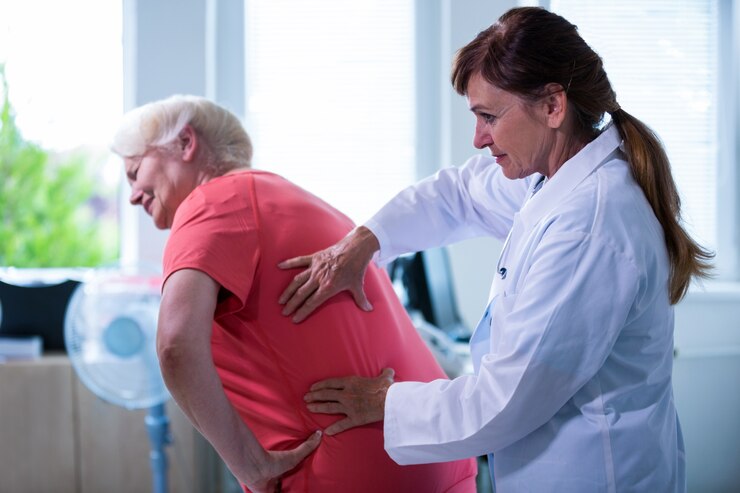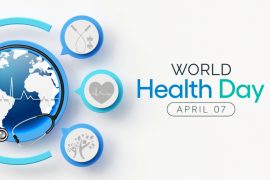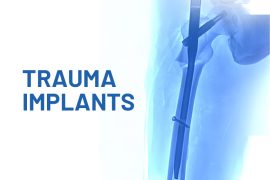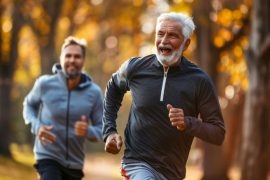Introduction
The amount of muscle and bone mass in a person is primarily determined by genetics. However, the amount of skeletal muscle and bone also changes with age. As we age, our muscle mass decreases while our bone mass remains relatively unchanged. A person’s muscle and bone mass are also affected by lifestyle factors like diet, physical activity, and other factors. Age-related loss of muscle mass and function is called sarcopenia or sarcopenia with aging. Bone mass loss is called osteopenia or osteoporosis. Aging is an irreversible process resulting from various anatomical and physiological changes leading to a substantial reduction in human capabilities, especially among the elderly.
What Is Muscle and Bone Mass?
Muscle and bone mass, a measurement of weight per unit of volume, is the sum or combined mass of skeletal muscle, tendons, and bones. The skeletal system consists of the bones and the connective tissues surrounding and supporting them. These tissues include the muscles, ligaments, and other skeleton components.
Symptoms and Causes of Muscle and Bone Mass Loss Occur in the Elderly
Muscle mass and bone mass loss are unavoidable aspects of aging. The muscles that support our skeleton are called muscle tendons; they attach to the bone via tendons, also known as aponeuroses. Their function is to increase the bone’s weight-bearing capacity to provide support in standing or walking. The symptoms of Muscle and Bone Mass include-
- Weakness and loss of strength and stamina impacting physical activity
- Reduced physical activity can cause further damage and shrink muscle mass
According to researchers, the causes include
- Physical inactivity mostly
- Reduced number of nerve cells sending signals from the brain to the muscles for movement
- Less concentration of growth hormone, testosterone, and insulin-like growth factors.
- Insufficient calories or protein for muscle mass sustenance
- Decreased basal metabolic rate (BMR) causes our body to become less efficient at utilizing food for energy, which means decreased calorie intake to maintain the same level of activity, which is a reduced ability to turn protein into energy.
- Poor Blood flow to the muscle and the effectiveness of the connective tissues diminishes and begins to release the bones from their muscles and other supporting structures, leading to muscle loss or sarcopenia and osteopenia progressing to osteoporosis with reduced bone density and increased rate of bone loss due to skeletal fragility.
Diagnosis of Loss of Muscle and Bone Mass in the Elderly
Whether one is physically active or not, muscle loss is a continuous process, just that the rate is higher in the case of physically inactive people. Loss of muscle and bone mass matters because it reduces strength and mobility. However, there is no specific test or level, or range that will help in the diagnosis of sarcopenia. Sarcopenia can intensify as early as 65 or as late as 80. Left untreated, it contributes significantly to frailty and a poor quality of life. It is also a significant cause of falls and fractures among older people limiting their mobility and resulting in disabilities.
How to Measure Muscle Mass and Bone Mass Loss in the Elderly
Though there are many methods to measure muscle and bone mass loss, the Dual X-ray absorptiometry (DXA) measurement technique is considered the most accurate and effective method for measuring muscle mass and bone mass loss.
Boosting Your Basal Metabolic Rate
Your basal metabolic rate (BMR) is the amount of energy your body uses at rest. To maintain your current weight, you need to consume enough calories to produce enough energy for your daily activities. Besides being determined by genetics, you can alter your BMR by lifestyle. For example, your BMR will decrease if you spend more time sitting down than standing up. There are many ways to increase your BMR, including:
- Proper diet: The foods you choose to eat can affect your BMR. A diet high in processed foods, sugars, and fat will result in a lower BMR than a diet that is balanced and high in fruits, vegetables, grains, protein, and fibre.
- Regular exercise: A daily workout can increase your BMR.It takes energy to perform a workout, and that energy comes from your BMR.
- Optimizing your body weight: Maintaining a healthy weight increases your BMR. You are likely to maintain a healthy body weight if you consume enough calories You are likely to maintain a healthy body weight if you consume enough calories to support the activity level of your age and sex.
Improving your diet to maintain your muscle mass
Although lifestyle factors can alter your BMR, your diet also affects your BMR. Studies show that a diet high in fruits and vegetables can increase your BMR and help you maintain your current weight. The type of food you eat affects your BMR significantly. A diet high in processed foods, sugars, and refined grains, such as white bread, contributes to a low BMR. A diet high in whole fruits and vegetables will improve your BMR and help you maintain your current weight.
How to Prevent Loss of Muscle and Bone Mass in the Elderly
- Daily protein intake: An adult’s recommended daily protein intake is between 0.36 and 0.8 grams per kilogram of body weight. The elderly require more protein than the general population because they are at a higher risk of losing muscle mass.
- Daily micro-nutrient intake: In addition to improving a person’s diet to maintain muscle mass, it is also important to ensure adequate intake of micro-nutrients. Micro-nutrients are vitamins, minerals, fatty acids, and amino acids essential for muscle and bone health.
- Daily exercise: A daily workout, specifically high-intensity strength training or resistance training, can increase muscle mass, decrease bone loss risk, and improve overall health. Exercise increases bone density and improves bone strength.
Conclusion
As you age, your BMR and muscle mass will continue to decrease. To prevent substantial loss in muscle mass and bone mass, you need to increase your BMR while focusing on healthy lifestyle habits. To do this, you need to measure your basal metabolic rate (BMR) daily. This will help you identify which lifestyle factors contribute to a low BMR and take steps to improve them. Daily BMR measurement can be done via a device such as the metabolic rate monitor. By tracking your BMR throughout the day, you can identify which factors affect your BMR negatively and take steps to improve them.
FAQs
At what age do bone and muscle loss typically begin?
Typically, most people reach their peak bone mass between 25 and 30. By the age of 40, bone and muscle loss typically begins.
What causes muscle and bone loss?
Physical inactivity causes disuse and leads to muscle and bone loss.
What causes muscle loss in the elderly?
Irreversible aging and slowing of limbs and physical activity lead to age-related sarcopenia or sarcopenia with aging.
What causes loss of bone mass in the elderly?
With age, the ability of the bones to absorb calcium and phosphate from your bones reduces, causing them to lose bone mass and grow weaker, leading to osteoporosis.
Can seniors regain and build lost muscle mass?
Yes, you can build and regain the loss of muscle mass as it is reversible, mainly with a combination of exercises like walking, resistance, and weight training to rebuild muscle and increase bone mass.
Can you increase bone density after 80?
Regular weight-bearing and muscle-strengthening exercises can increase bone density and strength through the micro-architectural bone arrangement.





Comments are closed.